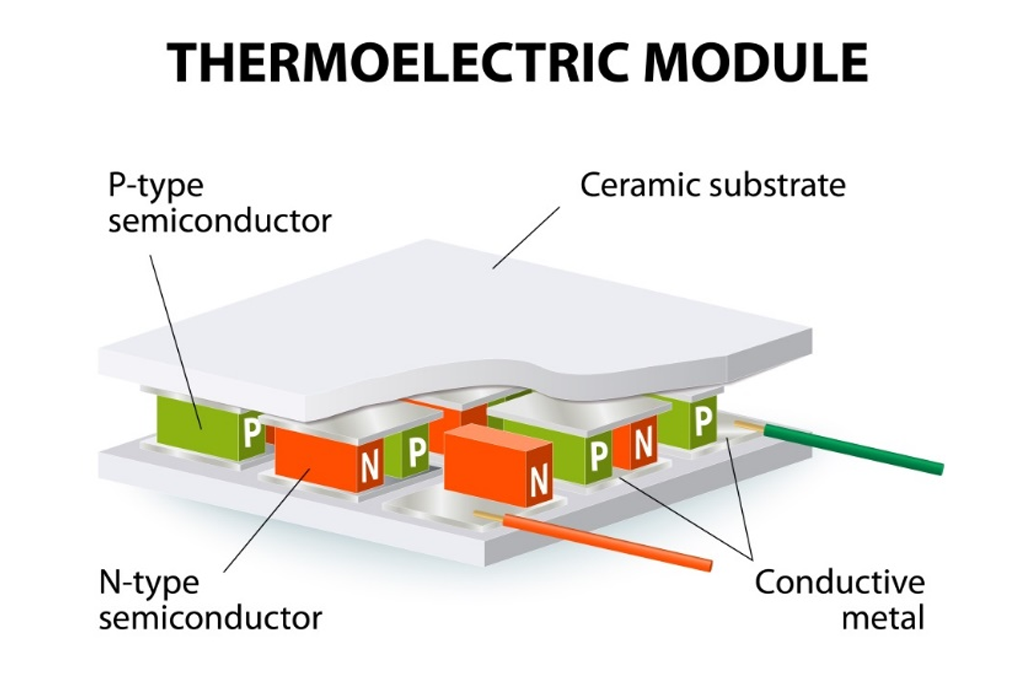Future of turning waste heat into electricity
New study shows enhanced thermoelectric properties of large core/shell nanowire systems that can be used to design thermoelectric devices and module applications.
Structures with dimensions of just a few nanometres (nanostructures) show unique properties that have been extensively investigated in an effort to improve the performance of thermoelectric materials. Thermoelectric materials convert temperature differences into electrical voltage that can be used to produce electricity.
A thermoelectric device includes semiconductor elements that are mounted between two substrates. The semiconductors are connected electrically in series and thermally in parallel, so when voltage is applied in one direction, one side of the device creates heat while the other side absorbs heat. In turn, voltage is created when there is a temperature difference between the two sides of the device. A thermoelectric generator that is used to convert waste heat from power plants into electrical power is an example of such a device. Thermoelectric devices are also used in automobiles to increase fuel efficiency.
While nanostructures have been extensively investigated and theoretical expectations were promising, few studies have shown experimental results of the full thermoelectric performance of nanostructures. The thermoelectric performance is generally predicted for the smallest possible nanostructures, which limits the practical applications of nanostructure-based thermoelectric devices.

A previous study that looked into the thermoelectric properties of bismuth/tellurium (Bi/Te) core/shell (C/S) nanowires (wires measured in nanometres) reported a method that can control the thermoelectric properties of nanowire systems with fewer restrictions on the nanowire size. However, the full thermoelectric performance of the C/S nanowire system was not reported. This motivated a collaborative effort from an internal group of scientists, including Prof. Wooyoung Lee from Yonsei University, Seoul, to investigate the dependence of various thermoelectric properties of nanowires with varying diameters.
“To estimate the full thermoelectric performance of the C/S NW system, the dependence of the various thermoelectric properties, including σ and S, on the NW diameter must be determined,” says Prof. Lee. He also states, “This is the first report of the full diameter dependent performance of C/S nanowires and is the first determination of optimum performance for large-diameter nanowires.”
Prof. Lee and his colleagues systematically investigated the diameter dependence of the thermoelectric figure of merit, ZT, by varying the diameter of the nanowires from 16 to 850 nanometre. The results showed that increasing the diameter of the Bi/Te nanowires resulted in increases of the power factor. This resulted in a very high ZT value that was shown to be much higher than those of the extensively studied pure Bi nanowires.
The improved performance of large Bi/Te C/S nanowires suggests the possibility of designing heterostructures (semiconductors with structures whose chemical composition changes with position). These semiconductors could be used in thermoelectric devices and in module applications such as thermoelectric generators and computer memory systems.
Recommended Articles
Professor Jong-Hyun Ahn
Novel technique for producing high-resolution micro-LED displays
Professor Seong Chan Jun
Professor Donghyun Kim
Array of hope: Up close and personal with mitochondria in neurons